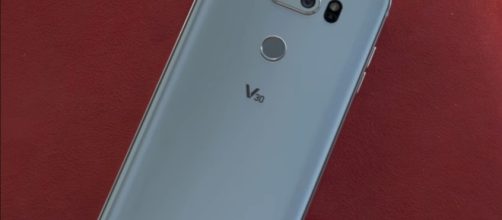When the Lg V20 came out in 2016, it was well received due to its powerful creation tools. It allowed manual control over video recording, a removable battery for spare swapping, and a quad DAC for a great listening experience. Despite these excellent features, some of the components such as the secondary display and huge size were deemed unnecessary.
This year, LG is coming back with a handset that prioritizes design. At IFA 2017, the company finally unveiled its much-awaited flagship, the LG V30. While the latest smartphone retains many of the LG V20's unique features, it also has a few differences.
What's new?
The V30 has a 6-inch display that boasts an 18:9 Quad HD OLED screen. Its bezels are dramatically shrunken with rounded corners and subtle curves on both sides. LG calls its new display design "FullVision," which is also reminiscent of the Infinity Display on the LG G6. Size has also been toned down compared to its predecessor, which was even larger than the iPhone 7 Plus. All the design refinements make the device easier and more comfortable to use.
The smartphone also received an upgrade to audio features as well as a number of options for video and imaging tools. It is now possible to capture, record, and edit all sorts of media. The back of the phone is outfitted in Gorilla Glass 5 and the dual-camera setup has lenses covered by Gorilla Glass 4.
A fingerprint sensor is placed exactly where the index finger naturally rests.
The difference lies in the battery, which is now non-removable. The V20 allowed the hot swap of the 3300mAh battery while the V30 has it locked and enclosed. Whether or not it is a convenient loss is a matter of user preference. The current handset has an IP68 water and dust-resistant body as well as support for wireless charging. Both of these features were non-existent in the previous model.
Other details
As for storage capacity, RAM is 4GB just like the G6. LG took on the same chip found in other high-end devices, the Snapdragon 835 SoC. As a result, pages and apps load at top speed. In addition to the software, the V30 dropped the secondary screen and replaced it with a "floating bar." This new feature closely resembles Samsung's Edge display tool except that it is smaller and horizontal.
The bar allows quick access to a range of apps, programs, and contacts that can be customized.
The dual camera has a 16MP ordinary angle and 13MP wide-angle setup. A front snapper with 5MP is also featured for selfie-lovers. It can capture clips up to 4K and offers cinematic features such as 16 color-grading presets and point zoom. The handset will be first available in South Korea on September 21. Availability in North America, Africa, Europe, Asia, and the Middle East has yet to be announced.
After its previous flagships focussed on unusual features like snap-in modules and second displays failed to become best sellers, LG decided to form its new handset with a simpler approach. Whether or not it will pay off is yet to be determined.


